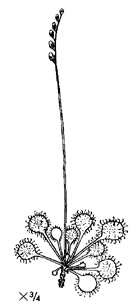|
Qaqamii}u{
qalgadam ukulganaa ngiin ugutaasakun.
(E)
|
How would you survive if you were lost in the mountains? What would you live on if you were fishing and your boat were suddenly dashed ashore? What if all the grocery stores and other modern conveniences disappeared tomorrow?
What kinds of plants would you use to feed yourself, to heal yourself, to keep yourself warm? Do you know how to use the natural stores of the land and the sea?
|
|
Some people think of the Aleutian/Pribilof Islands as windy, barren, cold and uninviting. With their mild winters, generous rainfall, and volcanic soils, however, these islands have provided well for the people for thousands of years. In fact, these islands were the setting for an advanced and innovative culture whose members were expert at using resources in all parts of the environment. Plants were among the most important resources the people used. Plants provided food that added variety and nutrients to the diet. The people gathered wild fruit, bulbs and roots. They harvested stems, leaves and sprouts for food. They treated their illnesses, wounds and pains with plant parts. On treeless islands, woody shrubs supplied fuel, and grasses supplied insulation and materials to make socks, containers, and wall and floor covering. Through decades of learning from their Elders, the people came to know how to survive from the resources of the land and the sea. |
THE SITUATION:
A sudden and dramatic earthquake will strike your area in about six weeks. You and your family and all the people you know will survive, but all the grocery stores will be destroyed. Completely. Not even one Cheerio or soda will remain. The airport runways will be gone, too. Perhaps the boats will bring supplies before winter comes. Perhaps not. In the meantime, you will need to gather food from plants. Others will be responsible for gathering food from the sea. How will you find your food? Where will you find your food? How will you prepare it? Store it? Are there plants for medicine in the area?
You are fortunate to have time now to plan and prepare. In a few short
weeks, you can learn a great deal about nature’s store. Probably
you will need help from Elders and mentors and other experts. But first
you need to discover what you already know about plants.
![]()
|
SAAHMIKAADA| Chiqim quganaal}i}igan qakagan ilan adas. Qayas kangan liisnada}ulas, sakang atim hadan agach azas. Si}lingis hasinal txidix su{tazas. Si}lingis i}i}idal adukus, ataqan si}li{ at{u{ aduutaakada{. Uku}aa haka}ina{ liidal chutxidigal hanga{taza{. Chuni}iim chuqigan ilagaan iladix axtal hanga{tal hakaa}a{tazas. Kangan tal}is akus tal}i{ aahmaa}im quhmagan siinimluzangis mataza{. Tal}is alalaka{ mal, aahmaa}ii angunaza{. Si}ligan chid}ingis aamgi{ atxida{. Siis{il al kay cha}ugna{ matanas ngaan su}azaqas. Si}ligan qutangis unalgal u}ungis an}a}inam aamgi{ qingdusanagan ngaan taanga{tach{isxazaqa{.
|
Achillea
Borealis |
|
They are found in gravelly dry ground areas. They are hardly found on tops of hills. They like growing down in the low-lying areas. The leaves are all bunched up and look crowded. The leaves are thin and long. One leaf is as long as a finger. It looks like it is feathery, grows sharply and tapers off at the top. On top of the plant are branches with white flowers that look seedy as they grow on top of the plant. There at the top are lots of branches and the flower grows big. The green leaves are used for stopping blood. The plant was used for people with nosebleeds and for cuts to stop the bleeding. The leaves are dried and boiled in water and the juice was used for people to drink, those who spit up blood. Translation by Moses L. Dirks |
|
![]()
| What do you know about plants? |
ACTIVITY ONE. You can make a log book to record your work on plants.
Later, you will make a cover for the book. Scientists usually record their daily work and their experiment notations in a log book. The log book helps them understand the changes they may need to make in future work and gives them accurate records to compare with when continuing experiments. You can be a scientist, too, while you are learning about plants for subsistence and survival.
ACTIVITY TWO. You can discover what you already know about plants.
Go outside with your class. Form a circle with your teacher and look at all the plants growing in that circle.
|
|
|
When you have discovered what you do not yet know, it will be time to prepare to call upon your Elders, and other experts.
| You can learn about leaves. |
While it is the flowers that most readily capture our attention in the plant world, the flowering season is, alas, quite brief. Leaves, on the other hand, are visible and prominent in most plants throughout the entire growing season. They may, in many instances, provide the sole clues to a plant’s identity. Thus, we begin with the leaves as we focus our observations on the plants of the Aleutian/Pribilof Islands.
If, however, you are working on this unit when the plants are in full flower, then your teacher may direct you to fast-forward to the “Flowers” section so that you capture the plants in full bloom. You may return to this section later.
ACTIVITY THREE. You can be a wise plant collector and learn about leaves.
-
Discuss the principles of collecting and using plants wisely.
-
Go outside with the teacher to a location near the school. You will
need to be able to return to that location later in the class period,
so the teacher will choose a place nearby. Collect 5 different-looking
leaves, preferably from some that are already on the ground.
- Choose leaves that look healthy. Select leaves that are still green or that have not dried out. When possible, take leaves that have already fallen off the plants. “Take care of the land and the waters.”
- If you need to pick leaves from a live plant, pick only one leaf from a plant, and not the whole plant. You want to keep the plant alive to do its important work. Be sure not to collect in an area traditionally harvested by others. “Don’t do anything to excess.”
- Select
just a few leaves. You only need 5 different ones. “Don’t
be greedy.”
-
Come back into the classroom and look at the leaves. Beginning with
one student’s collection, talk about the following questions:
- What do the leaves have in common? Are they the same in any way? How are they different?
- What do the leaves feel like? Are the leaves hairy? Smooth? Sticky? Thick? Thin?
- Do the leaves have a scent?
- How are the edges (margins) of the leaves shaped?
- Which leaf is the biggest? Smallest? Longest?
- Are the leaves all the same color? How are they different?
- What designs are on the leaves? Can you see the veins? Hold the leaf up to the light to see the pattern of the veins.
- Have insects eaten on any of these leaves? How do you know?
Continue with 2 or 3 more student collections.
|
ACTIVITY FOUR. You can describe leaves.
ACTIVITY FIVE. You can “Pick a Place” to write about. Twice a month during the school year, you will be visiting a personal place for 15-20 minutes. Your personal place should be approximately 9.8 feet (3 X 3 meters) in size. During your visit you will write what you observe there, or take photographs, or draw pictures of objects. When you go home today, go outdoors with your parents or caregivers and choose a special place in the yard or in a nearby area that will become your personal place. Tonight, you should write one paragraph describing your place. |
|
|
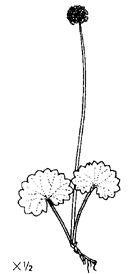
Saxifraga
punctata
(= S. nelsonia D. Don)
Cordate-leaved saxifrage, brook saxifrage
Leaves are palmate, toothed, and basal.

Galium
aparine
Bedstraw
Leaves are whorled, smooth.
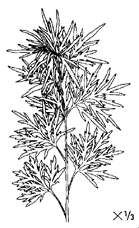
Artemisia
unalaskensis
Sixsiqa{ (UT 358)
Wormwood
Leaves are lobed, alternating.
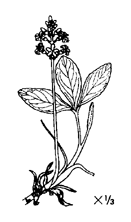
Menyanthes
trifoliata
Buckbean, bogbean
Leaves are pinnate, smooth.
|
For words in Unangam tunuu, E = Eastern dialect and W = Western dialect. If no designation is noted, the words are familiar in both.
|
|
ACTIVITY SIX. You can use your collected dried leaves to make a cover for your log book. Cut pieces of manila file folder and contact paper or laminating film to match the size of your log book. Do one of the following (or explore with your own technique for using the pressed leaves on your log book cover):
|
|
|
OR
- Place the leaves with layers of paper towel on the bottom and a layer of wax paper on the top. Press with an iron on low heat for a minute. See if the plant is fairly dry. Press again. Then arrange as in A above.
OR
- Press your leaves. Using the school laminator, arrange your leaves on laminating film. Write each leaf’s descriptive words beside it on small pieces of paper, and secure the specimen and the words with the laminator.
OR
- Use a microwave plant drying method to quickly press your leaves. Then arrange them as in A, B, or C above.
ACTIVITY SEVEN. You can show what you know about leaves.
Complete the Leaf work sheet.
|
ACTIVITY SEVEN Leaf work sheet Name ____________________________________ Draw a line from the word to the picture: a.
Toothed leaf |
||||
 |
 |
 |
 |
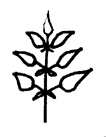 |
|
f. When the indentations on the leaf margin are deeply cut, they are ______________________. g. When the leaf margin is not cut, it is ____________________ or _____________________. h. When the leaf’s veins come from a point near the base and fan out, they are ______________ . i. Leaves arranged one above the other on opposite sides of the stem are__________________ . j. An Unangam tunuu word for leaf is: ____________________ or ______________________ . |
||||
|
ACTIVITY SEVEN Leaf work sheet Answer Key
|
||||
b.
Parallel veins |
a.
Toothed leaf |
e.
Basal leaves |
d.
Whorled leaves |
c.
Opposite leaves |
|
f. When the indentations on the leaf margin are deeply cut, they are lobed. g. When the leaf margin is not cut, it is smooth or entire. h. When the leaf’s veins come from a point near the base and fan out, they are palmate. i. Leaves arranged one above the other on opposite sides of the stem are alternate. j. An Unangam tunuu word for leaf is yuli{ (E) or si}li{ (W). |
||||
ACTIVITY EIGHT. You can learn about traditional ways to preserve and use leaves.
Prepare 4 questions that you would like to ask an Elder or expert about collecting, caring for, preserving and using leaves. As soon as you have the opportunity to interview an Elder or expert, ask these questions and record their responses in the log book.
EXTENSIONS
ACTIVITY A
With a partner, sort the Plant Illustration Cards into groups with similar leaves in each group. List the reasons why you have made these groups.
ACTIVITY B
Leaf
classification at GLOBE site:
http://globe.fsl.noaa.gov/sda-bin/wt/ghp/tg+L(en)+P(landcover/LeafClassification
To think about: Why do you suppose leaves are different sizes and shapes?
| Student
Assessment, ONE |
Name: ____________________________ | ||
| Date: __________________ | 1. Always | 2. Sometimes | 3. Never |
| I stayed on task. | |||
| I completed my work. | |||
| I asked questions. | |||
| I worked cooperatively with my class members. | |||
| I was respectful of values. | |||
| I was respectful of others. | |||



